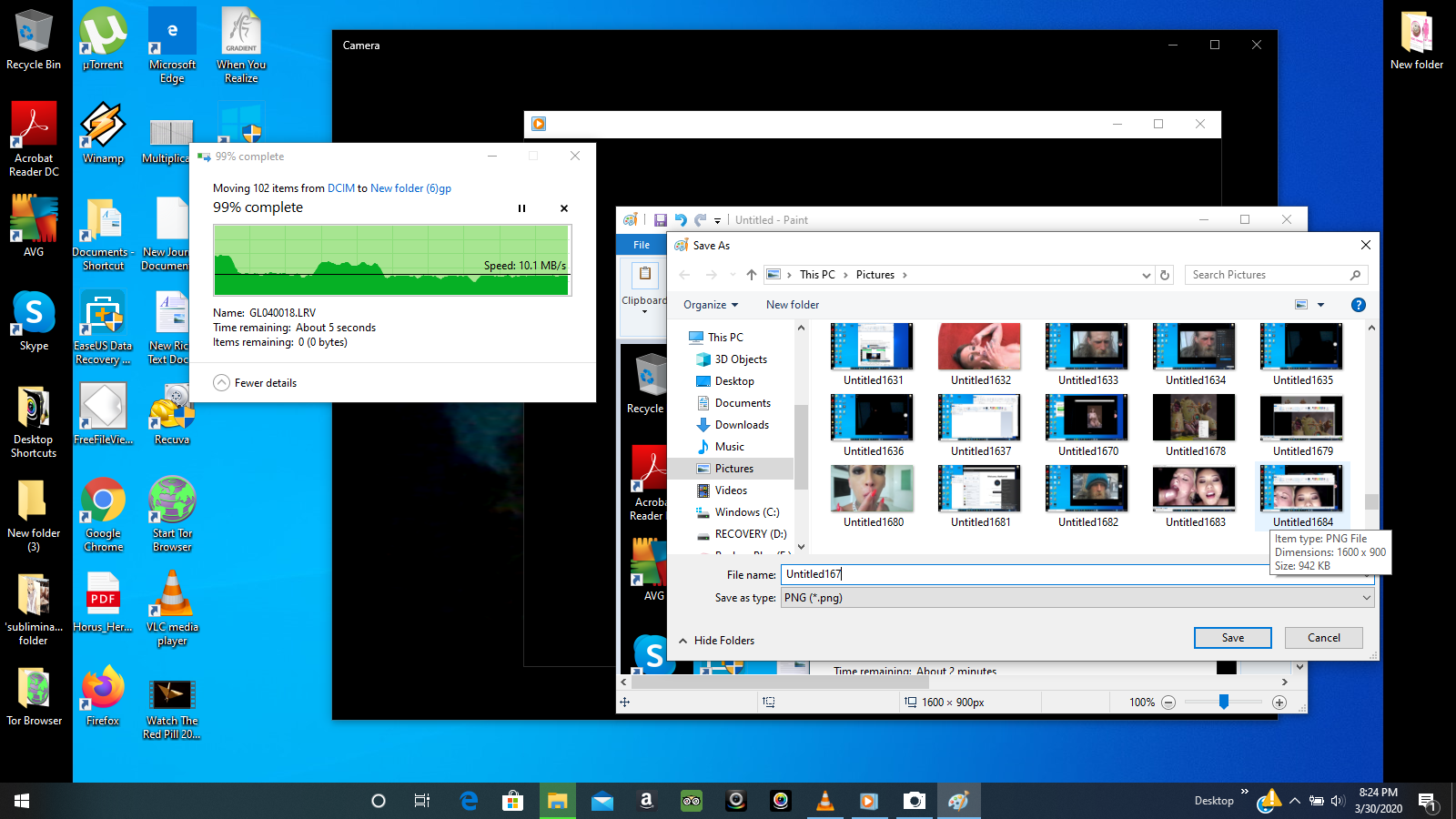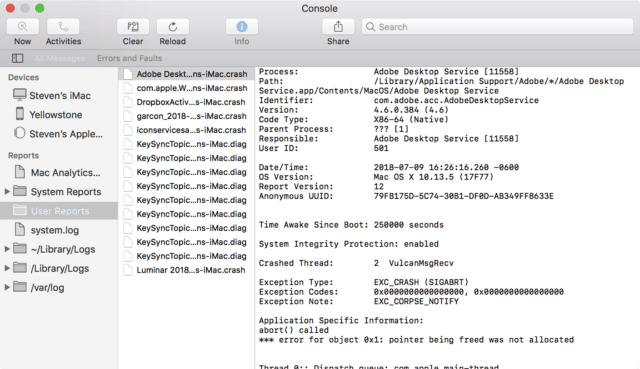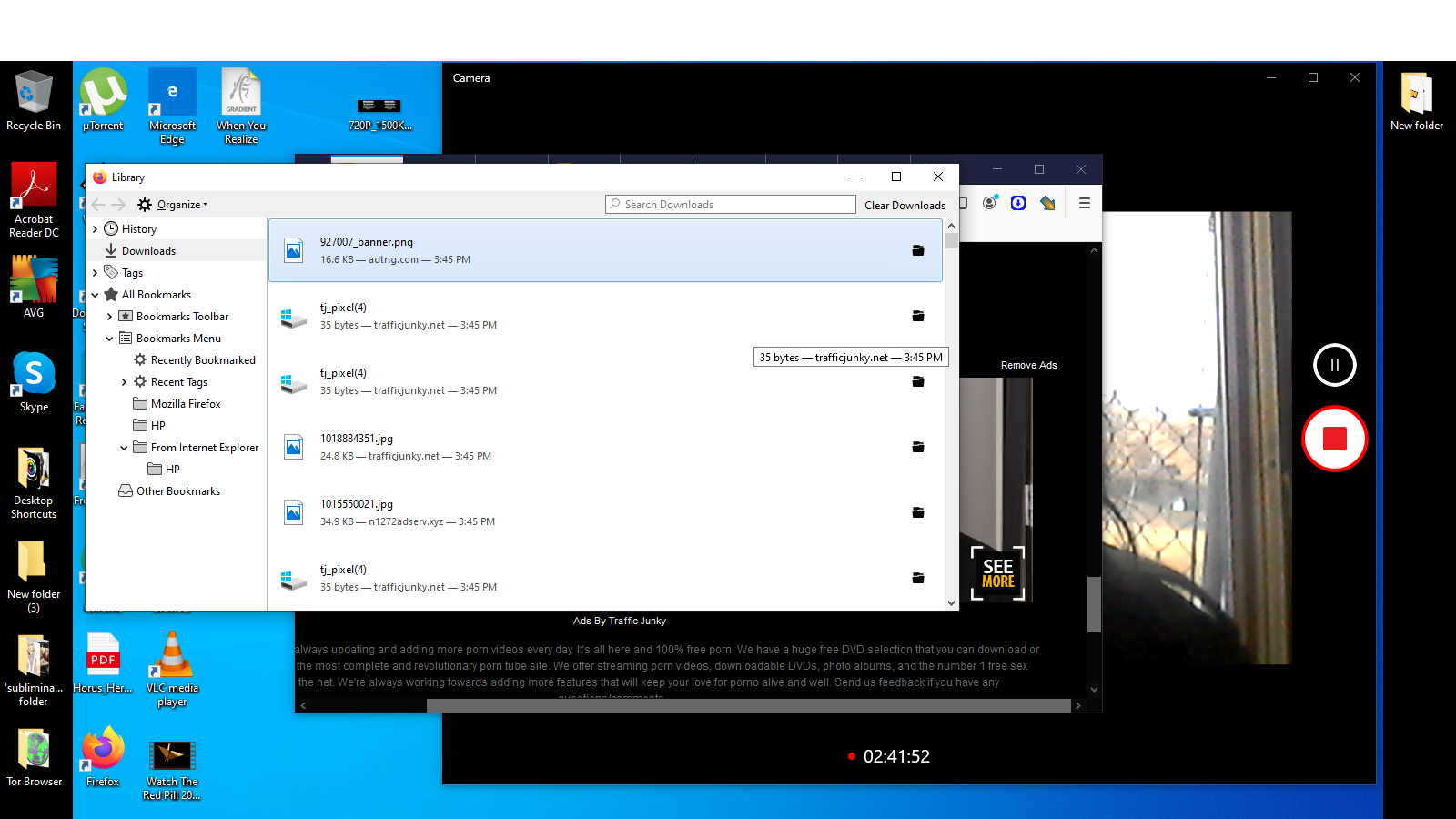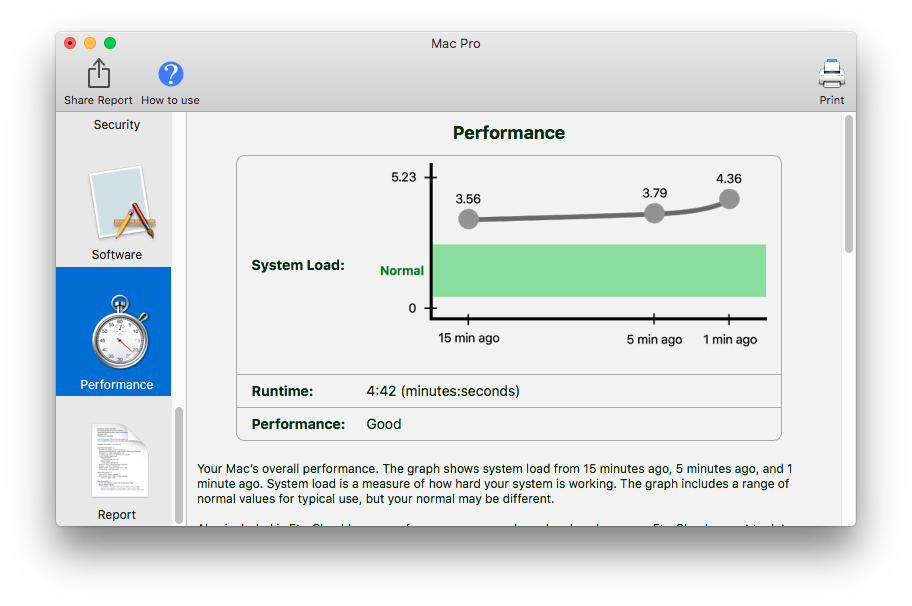The Library Menu Item is not readily available in the top-menu bar on your Mac. However, it is really easy to reveal the Hidden Library Menu Item and open the Library Folder on Mac.
- Can I Delete Diagnostic Reports On Mac Library Card
- Can I Delete Diagnostic Reports On Mac Library Software
- Can I Delete Diagnostic Reports On Mac Library
- Can I Delete Diagnostic Reports On Mac Library Cardi

- System Reports (System Diagnostic Reports in earlier versions of Console): Analytics, diagnostics, and crash reports for system processes. System log: A log of current system events and messages. /Library/Logs: Application logs for the current logged in user. /Library/Logs: Application and process event logs for all users.
- You can create the same report at any time: press and hold the Option key, then choose Create Diagnostics Report from the Wi-Fi status menu. It can take your Mac several minutes to create the report. MacOS Sierra and later saves the report to the /var/tmp folder of your startup drive, then opens that folder for you. To open the folder manually.
Access Library Menu and Open Library Folder On Mac
Step 2: Remove Excel preferences and Office settings. Make sure that all Microsoft Office for Mac programs are closed. On the Go menu, open the root/hidden Library folder. Note The Library folder is hidden in Mac OSX Yosemite. To display this folder, hold down the OPTION key while you click the Go menu. Open the Group Containers folder.
In addition to the Library Folder located at the top-level of Hard Drive, macOS creates an additional Library Folder for every User Account on Mac.
This User Level Library Folder contains multiple files storing settings, preferences and other data for various Apps and Programs on the Mac.
While you may not currently find any need to Open Library Folder, you will find the need to Access Library the Folder for troubleshooting purposes.
Hence, it is good idea to be familiar with the steps to Access the Hidden Library Menu and Open the Library Folder on your Mac.
1. Open Library Folder on Mac Using Option Key
Click on the Finder Icon > press and hold the Option key on the keyboard > select Go tab in top-menu bar and click on the Library option that becomes available in the drop-down menu.
Note: Press the Alt Key in case you are using an external Windows keyboard with your Mac.
Clicking on the Library Menu option will take you straight to the Library Folder on your Mac.
2. Open Library Folder On Mac Using “Go to Folder” Option
Another way to Open the Library Folder on Mac is by using the Go to Folder option, as available in macOS.
Click on Finder Icon > select the Go tab in top-menu bar and click on Go to Folder… option in the drop-down menu.
In Go to Folder window, type ~/Library, and click on the Go button.
This will immediately take you to the Library Folder on your Mac.
3. Permanently Unhide Library Menu On Mac
It is also possible to permanently unhide the Library Menu in the top-menu bar of your Mac by using the Terminal to run chflags nohidden ~/Library/ Command.
Open the Finder on your Mac > select the Go tab from top menu-bar and click on Utilities in the drop-down menu.

On Utilities screen, open the Terminal. App by double-clicking on it.
In Terminal window, type chflags nohidden ~/Library/ and Press the Enter key to submit your command for execution.
Once the command is executed, you will see the Library Menu item being clearly visible and permanently unhidden in the top menu-bar of your Mac.
You can always go back to the default Hidden Library option by running chflags hidden ~/Library/ command in the Terminal.
Open the Terminal on your Mac, type chflags hidden ~/Library/ and press the Enter Key on the keyboard of your Mac.
Once the Command is executed, you will find the Library Menu option being hidden in the Go Menu.
System cleanup in one click
We associate a Mac with quality, capacity, speed, and reliability. But it might happen so that your Mac underperforms and unpredictable issues occur. Before taking it to the nearest Apple service, you can try to identify the problem by yourself. That will save your time and money, and prevent serious system crashes. Identifying whether the issue is a hardware or software one will determine the possible actions and next steps.
When we deal with the hardware problem, the first thing to try is to perform Apple Diagnostics (or Apple Hardware Test). It will help you reveal the process that causes the problem and lowers Mac productivity.
Apple Diagnostics is an easy-to-understand tool that provides detailed results and suggestions with the next steps. Whether you are a techie or not, you'll get everything easily.
What is Apple Diagnostics?
Apple Diagnostics is a built-in test that helps detect what hardware components are causing the problem, and find system failures. The test checks RAM, power controller, logic board, battery, and other wireless modules.
That was the hard part. And the easy part is that you can run Apple Diagnostics in just a few steps. The whole process will take about 2-5 minutes — but ultimately saves hours of your time.
A great feature of Apple test is that after hardware checking, it displays an error code, offers you clear solutions, and the assistance of Apple Support. You can write out the error codes (known as reference codes), and either do the research on/ your own or contact Apple.
When referring to Mac hardware test, you might also hear about Apple Hardware Test (AHT). This is an older brother of Apple Diagnostics (AD), and they have some minor differences. Mainly, the results of AHT aren't conclusive and descriptive. AHT is used in Macs released in 2012 or earlier, while AD is a more advanced analog that works with newer Macs.
Essentially, a Mac hardware test is the great tool to help you understand the problem. And if it doesn't have a fix for it — there are more advanced tools that you can use to troubleshoot Mac issues. More about that in a moment.
How to run Mac diagnostics
Running a hardware test on Mac may seem like a complicated process, but believe us — that's not:
- Disconnect all the peripheral devices (printer, cables, external DVD drive) except the keyboard, mouse, display, and speakers. Make sure your Mac is connected to mains power and the internet.
- Select Apple Menu > Restart
- Press and hold the D key until you see a list of different languages on the screen
- Select a language. Apple Diagnostics starts automatically.
- Wait for about 2-5 minutes until the checking is completed. If any problems are found, you'll see the options of solutions and an error code.
After that, you can either repeat the test, get more information, restart or shut down the Mac. That's it - an easy 5-step process, as promised.
Apple recommends to print out the instructions to keep them close at hand and make sure you don't miss any step. Or, you can take a photo. Right, that's what people do in 2021.
What are the common Apple Diagnostics results
After performing a Mac hardware test, you'll get the list of found issues with detailed descriptions and related reference codes. Each code stands for a particular error and helps you quickly figure out the next steps. Usually, an error description will suggest possible solutions. However, to fix a specific problem, Apple Diagnostics might recommend you to contact Apple or take your Mac to an Apple Authorised Service Provider or AppleRetailStore.
There could be the case the system testing doesn't find any issues.
In this case, you have a few options. Please note that they are mutually exclusive, which means you should choose the best option for you:
- Repeat the process by hitting Run the test again
- To get more information on support and service options, click on Get started:
- The macOS X recovery will start
- Send your serial number and reference codes to Apple by clicking Agree to send
- Follow the on-screen instructions.
- Restart your Mac
- Hit the Shut Down button.
Because well, sometimes a small mistake might hamper it all. Maybe the first time you tried to run Apple Diagnostics, your power adapter wasn't plugged in. Connect it and try again — this will help fix the problem.
What if you can't run diagnostics
You can face the problem when Apple Diagnostics simply doesn't work. Don't worry, it's solvable. There might be a couple of reasons why this happens:
- Some external devices are plugged in. Double-check you've disconnected everything except the keyboard, mouse, display, and speakers.
- A part of the diagnostics system can be damaged. You can solve the problem by restarting the Mac while holding down Option+D. This will start an internet-based hardware test.
- Firmware password might be the problem. Make sure you turn it off while performing hardware testing.
What if diagnostics found no issues

In case Apple Diagnostics identifies no hardware issues — but your Mac is still misbehaving — maybe, software is the problem.
Often, Macs are slowing down, freezing, or behaving strangely due to full storage, malware, leftovers from uninstalled apps, large and old files. The good news is you don't have to guess, or install many applications to fix each problem separately. An all-in-one tool called CleanMyMac X has all the required functions to test your Mac from a to z. It cleans up, protects, and speeds up your Mac.

Just one click to optimize your Mac — CleanMyMac X makes it fly like a rocket.
Here's how CleanMyMac X optimization works:
- Go to the Maintenance tab
- Specify what should be done. For example, if you want to speed up your Mac by freeing up some space, check the box next to Free Up Ram”. You can select all the tasks at a time, or choose the particular ones.
- Press Run.

Can I Delete Diagnostic Reports On Mac Library Card
Yay, you launched a rocket!
The most common problem that impairs system performance is the junk files that clutter your Mac. You might not even know about them. Luckily, CleanMyMac X has a solution for this, too. Resolve various errors with a great feature called System Junk:
- Hit Scan
- Once you see the results, press Review Details
You'll see the list of all items that should be cleaned or fixed. You can review the results and deselect those items you're not ready to let go. CleanMyMac X will omit them while cleaning up your Mac. Once you're ready, hit Clean.
Wow, your Mac feels much better now.
Can I Delete Diagnostic Reports On Mac Library Software
Go beyond standard diagnostics
Can I Delete Diagnostic Reports On Mac Library
There's even more you can achieve with running a diagnostics — if you have the right tools for it. Conduct an advanced system testing and optimization that will secure and speed up your Mac with an app like MacPilot.This powerful utility unlocks over 1200 hidden features that go beyond standard Mac settings.
It allows you to improve system performance by running executables, emptying trash, resetting DNS cache, clearing print queue, and more Best of all, it's all done automatically. You don't even need to know what that all means — let the MacPilot app do the job for you.
MacPilot checks and boosts the productivity of your Mac on a daily, weekly, or monthly basis. Small changes make a big difference. To optimize Mac with MacPilot:
- Click on the Maintenance icon
- Tick the box near the desired action. For example, if you want to optimize system performance on a daily basis, then tick the box near 'Daily.'
- Voila — MacPilot makes your Mac fly faster than ever.
Conclusion
System performance testing is a handy tool that keeps your Mac healthy, saves your time and money. The primary step is to understand whether the issue is a hardware or software one. While Apple Diagnostics deals with hardware breakdowns, CleanMyMac and MacPilot fix the software problems.
Can I Delete Diagnostic Reports On Mac Library Cardi
Doesn't matter if you are a Mac power user or Mac-newbie, these tools will do system testing and optimization for you. To make the most out of your Mac, regularly check its performance and easily fix any issues in no time.
Running Apple Diagnostics and then optimizing performance with CleanMyMac X and MacPilot is a winning combo that prolongs the life of your Mac. Both apps are free for 7 days on Setapp, the curated suite of best productivity apps — so you can try both of them to make your Mac fly.